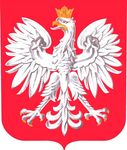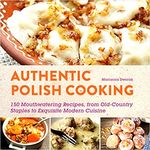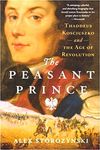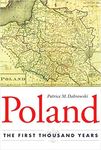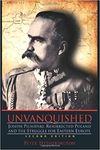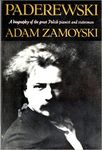DO YOU KNOW POLAND? - POLISH HISTORY AND CULTURE BOOKS AND INFORMATION ON - Polish Heritage Club
←
→
Page content transcription
If your browser does not render page correctly, please read the page content below
General History of Poland
Patrice Dabrowski, Poland: The First Thousand
Years (2014) Avoiding academic prose yet precise, this
sweeping overview of the history of Poland into the 21st
century is engagingly written but geared toward more
scholarly audiences. Excellent source of knowledge about
outstanding individuals, major turning points, and origins of
such memorable mottos as " for our freedom and yours"
which reverberated through the long history of struggles for
Poland's independence and freedom during the 19th and
20th centuries.
Norman Davies, God’s Playground: A History of
Poland (several editions between 1981 and 2005)
The first of the “modern” studies of Poland, this detailed
history in two volumes (Volume 1: The origins to 1795 and
Volume 2: 1795 to the present) is also widely viewed as one of
the best English-language works on the subject. Davies is
widely known as a prolific writer and an expert on Polish and
European history.
Norman Davies, Europe: A History (1995) A highly
innovative work that gives proper attention to Poland’s place in European history. From the review
section of Good Reads website: "....histories should neither be told as stories or as simply a collection of
facts, but something in between: Davies does it to near perfection. The writing is smooth and easily
understandable for all."
John Radzilowski, A Traveller’s History of
Poland (2007, 2nd edition in 2014) Not a
travelogue but an outstanding account of Poland's
complex history and Poles' invincible spirit. Designed
for general audiences, this clearly written and well-
organized book includes numerous illustrations, maps,
timelines, lists of historical figures, and a gazetteer.
Adam Zamoyski, The Polish Way: A
Thousand Year History of the Poles and
Their Culture (1993 and later editions)
Masterly and captivating work that presents Poland’s
history with a literary slant and an eye for the audience
with prior knowledge of the subject. The book is richly
illustrated and includes some maps and a bibliography.
Adam Zamoyski has also authored other valued works
on Poland (e.g. The Last Kingdom of Poland, Holy
Madness, Warsaw 1920 - Lenin's Failed Conquest of
Europe, The Forgotten Few: The Polish Air Force in
World War II) as well as biographies of Frederic Chopin
and Ignacy Jan Paderewski.Polish-American History
James Pula, Thaddeus Kosciuszko: The
Purest Son of Liberty (1998) An excellent
biography of Kosciuszko, the forward thinking patriot
who fought for America’s and Poland's independence
at the end of the 18th century.
Alex Storozynski, The Peasant Prince:
Thaddeus Kosciuszko and the Age of
Revolution (2010) A great read about the
national hero of two nations. From the reviews on the
Amazon website: "... one of the most entertaining,
fascinating, and comprehensive nonfiction personal
histories I have ever read. It reads as if it was made for
the silver screen." and "While it should be mandatory
reading for people with interests in Poland, it should
also be mandatory for anyone interested in freedom."
Piotr Wandycz, The United States and
Poland (1980) An outstanding study of the
history of relations between Poland and the United
States over the centuries. It is also the very first
significant book that brings Polish Americans and
Polonia (Polish community in America) into this story.
James Pula (editor), The Polish American
Encyclopedia (2011) The very best single volume
detailing the story of the Polish migration and settlement
experience in America. It covers the ties between Polonia
and Poland and the people who are key to this story. The
book belongs in every library in the United States and in
the home of every Polish American who is interested in
learning more about his or her heritage.
Donald Pienkos, Yesterday, Today, Tomorrow:
The Story of the Polish National Alliance
(2008) This detailed story of the largest and most
significant Polish American organization includes a good
discussion of Polonia's role in Poland’s liberation from
Soviet domination in and after 1989, and its entry into
NATO. Dr. Pienkos also wrote the official history of the
Polish American Congress, For Your Freedom Through
Ours: Polish American Efforts on Polands’ Behalf, 1863-
1991 (1991).
Important Journals and Publishers
Polish American Studies (semi-annual), Sarmatian Review
(three times a year) and Polish Review (quarterly)
Publishers: Hippocrene Books Publishing Company and
Aquila Polonica PublishingPoland in World War II
Józef Garliński, Poland in World War II (1985)
A clear and comprehensive discussion of the place of Poland in
this conflict. The author published several other useful books
including works on the role of Polish mathematicians in breaking
the Nazi German “Enigma” machine code before World War II
and on the resistance movement in the German concentration
camp in Auschwitz.
Halik Kochanski, The Eagle Unbowed (2012)
An unmatched synthesis of Poland’s experience in World War II.
The author deftly integrates operational analysis with complex
internal politics of Poland’s armed forces in exile. Her account of
the Polish Resistance and the 1944 Warsaw Uprising is excellent;
and her treatment of Polish-Jewish relations is well-balanced.
Kenneth Koskodan No Greater Ally: The Untold
Story of Poland’s Forces in World War II (2011)
From the Amazon website: "The story of millions of young men
and women who gave everything for freedom and in the final
victory lost all. In a cruel twist of history, the monumental
struggles of an entire nation have been largely forgotten, and
even intentionally obscured."
Richard Lukas, Forgotten Holocaust: The
Poles under German Occupation 1939-
1944 (2017) If you were raised on the belief that only
Jews suffered at the hands of the Nazis, you are in for a
shock in reading this thorough account of the barbaric
murder of 3 million Polish gentiles by the Germans
during World War II as well as the cultural genocide of
Poland (the systematic German practice of destroying any
traces of Polish culture). The book also includes the story
of ŻEGOTA, the underground organization that helped to
save thousands of Jews, and an annotated list of Poles
executed by Germans for helping the Jews.
Richard Lukas, Out of the Inferno: Poles
Remember the Holocaust (1989) An anthology
of gripping recollections of 60 Poles who survived the
atrocities of German occupation of Poland in World War
II. Many stories focus on participation in resistance
and/or efforts to help/ save Jewish countrymen - even
though German occupiers punished them by death to
the helpers and their families.
Władysław Szpilman, The Pianist (1999)
Personal account of a Polish Jews survival in Warsaw,
1939-1945. Szpilman’s shock and ensuing numbness become ours, so the acts of ordinary kindness or
humanity of those who helped him survive take on an aura of miracle.Miscellaneous Topics
Piotr Wandycz, The Lands of Partitioned Poland,
1795-1918 (1974) A highly useful study of the Polish lands
under foreign rule from the end of the 18th century until 1918.
It makes interesting reading for Polish Americans who wish to
learn more about their immigrant ancestors’ origins and the
conditions which led them to leave for America.
Peter Hetherington, Unvanquished: Joseph
Pilsudski, Resurrected Poland and the Struggle
for Eastern Europe (2014) This work expertly combines
biography (Pilsudski lived from 1867 to 1935) with the
discussion of the larger story of Poland’s political experience up
to World War II. Pilsudski was arguably the most important of
the three main statesmen (Ignacy Paderewski and Roman
Dmowski are the others) playing the leading roles in the
resurrection of an independent Polish state in 1918, after 123
years under foreign domination.
Adam Zamoyski, Paderewski (1982) A captivating
biography of the cherished pianist and composer using his
worldwide fame to promote the idea of an independent
Poland. He is widely credited for his role in the U.S president
including the creation of Polish sovereign statehood as one of the prerequisite peace conditions (The
Fourteen Points) for ending the World War I. While representing Poland at the Paris Peace Conference
(1919), Paderewski also served as Poland's Prime Minister and its Minister of Foreign Affairs.
Piotr Wandycz, The Price of Freedom (1992)
History of east/central Europe countries that became free
of Soviet domination after 1989 ( Poland, Hungary, Slovakia
and the Czech Republic). Despite obvious differences,
these countries remain connected by a certain "similarity of
fate" and bonds forged under the rule of the Jagiellonian
dynasty kings reigning between the 14th and 16th
centuries.
M.B. Biskupski, Hollywood’s War with Poland,
1939-1945 (2010) An indispensable work discussing
an important question: Why has the story of Poland (and
Polish Americans) received so little or no constructive
attention in Hollywood motion pictures ? With a persuasive
explanation, this book tackles the problem of Poland’s low
profile and misrepresentation in mass media.
Important Authors
Other notable historians and authors
Marian Kamil Dziewanowski - outstanding historian
of Poland, Russia and modern Central Europe.
Important Authors
Jan Nowak, Jan Karski, and Stefan Korboński - three
post World War II émigrés and authors of
outstanding works on Polish themes.
Neal Pease - award winning historian of the Catholic
church in 20th century Poland.Treasures of Polish Literature
Adam Mickiewicz (1798-1855)
Widely regarded as Poland’s National Poet, Mickiewicz wrote
during Poland’s Romantic Period. Known chiefly for the poetic
drama “Dziady” (Forefathers’ Eve) and the national epic poem
“Pan Tadeusz: The Last Foray in Lithuania,” described on the
Amazon website as "a towering achievement of European
literature." His poems read beautifully in Polish but language and
metering tend to dull the translations in English. Hopefully, this
changes with a new translation of "Pan Tadeusz" by Bill Johnston,
the award-winning translator of Polish literature. The book is
scheduled for release on September 18, 2018. In the meantime,
and if you don’t read Polish, read the poet's acclaimed biography
"Adam Mickiewicz, The Life of a Romantic" by Roman Koropeckyj
(2008).
Polish Winners of the
Henryk Sienkiewicz (1846-1916) Nobel Prize in Literature
Winner of the 1905 Nobel Prize in Literature, Henryk 1905 Henryk Sienkiewicz
Sienkiewicz is one of Poland’s finest and most prolific 1924 Władysław Reymont
authors known for his historical novels. The immense
popularity he enjoyed during his lifetime continues to 1978 Isaac Bashevis Singer (Yiddish)
this day in Poland and abroad. He gained the fame 1980 Czesław Miłosz
internationally with Quo Vadis, a book about early 1996 Wisława Szymborska
Christianity in Rome. His other great masterwork is The
Trilogy, translated by the Polish American novelist W.S. Kuniczak. In dramatic, even thrilling fashion, its
three volumes entitled With Fire and Sword, The Deluge and Fire in the Steppe cover the saga of the
wars fought by the Polish-Lithuanian Commonwealth in the 17th century.
Zbigniew Herbert (1924-1998)
With 2018 declared as the Year of Herbert by the Polish Senate,
a tribute is paid to one of the greatest and most translated
Polish and European writers of poems, essays and drama of the
20th century. In the opinion of many, he deserved a Nobel
Prize for his work focused on human dignity under assault in the
chaos of oppressive regimes. Adam Zagajewski's short study
"Zbigniew Herbert, 1924-1998" with selected poems (some
translated by Czesław Miłosz) and essays is a good starting
point to become familiar with one the most admired and
respected voices associated with Poland.
Books About Polish Literature
Czesław Miłosz A Survey of Polish Literature (1990) An
interesting, informative, if often opinion filled introduction
to a vast subject that is nearly unknown among Americans.
Michael Mikos has published an impressive series of
anthologies of Polish literature in specific periods ranging
from Medieval to Contemporary.Polish Religious Figures
Saint Maximillian Kolbe (1894-1941) Patricia Treece's
book "A Man for Others, Maximillian Kolbe, Saint of Auschwitz in the
Words of Those Who Knew Him" is the best biography of the "martyr
of charity" who gave his life for another prisoner at the German
concentration camp at Auschwitz. With doctorates in philosophy and
theology, he was a simple and unassuming man who continued his
pastoral work in the midst of horrors of Auschwitz . His inspiring story
is told in the word of those who personally knew this scholar,
publisher and priest.
Blessed Mary Angela Truszkowska (1825-1899)
Foundress of the Felician Sisters (Congregation of Sisters of St. Felix
of Cantalice Third Order Regular of St. Francis of Assisi). This order,
founded in Warsaw in 1855, is dedicated to teaching, caring for and
serving those in need (sick, homeless and abandoned). Since the first
five Felician sisters arrived to Wisconsin in 1874 and worked primarily
with Polish immigrants, the order's presence increased dramatically
in the world. Currently about 1,800 Felician sisters serve various communities across the United States,
Canada, Europe and South America.
Saint Maria Faustina Kowalska (1905-1938) Known as "the apostle of Divine Mercy", she
captured in her "Diary of Saint Maria Faustina Kowalska: Divine Mercy in My Soul" the essence of God's
Divine Mercy revealed to her during prayers. In tribute to her role in bringing the Divine Mercy devotion
to the Church, Pope Francis entrusted the Holy Year 2016 to Saint Faustina and made it the Jubilee of
Mercy. Along with Saint John Paul II, a passionate devotee of Divine Mercy, she was a patron saint of
2016 World Youth Day (WYD) in Kraków. Millions of 2016 WYD participants took home St. Faustina's
message with the event's theme song " ‘Blessed are the merciful, for they will receive mercy.”
Saint John Paul II (1920-2005) "Witness to Hope: The
Biography of Pope John Paul II" by George Weigel is the
authoritative portrayal of a leader whose religious convictions
changed the course of history. The story of Karol Wojtyla begins
in a small town in Austria-controlled Poland. It takes him through
his coming of age in World War II, where he became a priest and
resisted the Nazis through acting and the writing of plays
promoting Polish culture. Later Wojtyla defined the theological
line of battle with communism for the soul of Poland and for all
those living under oppressive rule elsewhere.
Saint Stanislaus Kostka (1550-1568) This patron saint
of youth, young students and "holy disobedience" was canonized
in 1726. Born into Polish nobility, he disobeyed his parents and
walked 500 miles from Vienna to Rome to become a Jesuit. He
entered the novitiate at the age of 17 but died just 10 months
later. Many parishes, seminaries and schools all over the world
are named after this young saint. Among them, the St. Stanislaus
Kostka church in Chicago is revered as the 'mother church' of all
Polish churches in the United States, while another historical
church of St. Stanislaus Kostka in Winona, Minnesota had
recently elevated its status to the minor basilica (2011).Museums, Libraries and Sports Hall of Fame
Polish Museum of America
984 N. Milwaukee Ave., Chicago, Illinois
A museum dedicated to collecting, preserving,
Museums in Poland
interpreting, and showcasing materials that There are hundreds of incredible museums in
chronicle Polish history and the Polish American Poland that are a must to see whether you are
experience. The museum houses a library and an a casual traveler, art lower or history buff. Our
art gallery, with sections highlighting prominent three selections include:
Poles. Among the library holdings are personal The National Museum of Warsaw - one of the
effects and correspondence of Kosciusko, largest museums in Poland with an immense
Paderewski, and St. John Paul II. The library collection of Polish paintings dating back to the
holdings include also maps, oral histories, films 16th century, foreign paintings (Italian, French,
and musical recordings. Flemish, Dutch, German and Russian), oriental
art, applied art and numismatics. The museum
is one of the National Museum of Poland
University of Wisconsin-Madison branches located in Kraków, Gdańsk, Wrocław,
Memorial Library Szczecin, Kielce, Łowicz, Zakopane and so on.
728 State St, Madison, WI 53706
Rynek Underground - state of the art exhibit
The library holds an impressive amount of situated underneath the Kraków'sSukiennice,
Poland-related publication within its Slavic & the Renaissance Cloth Hall), (a central point of
Eastern European Studies Collection. The Polish the main market square declared as one of the
Collection was started in the 1930s by Witold first UNESCO World Heritage Sites declared in
Doroszewski (a distinguished Polish linguist and 1978), Above the ground level merchant
lexicographer) and Józef Birkenmajer (Polish space, the hall houses a gallery of the 19-th
Slavist, poet, translator and literature historian). century Polish art. The underground museum
Its extensive holdings include a collection of features remains of medieval constructions,
Polish Solidarity materials. workshops and aqueducts as well as hundreds
of holograms and 3D models truthfully
recreating the atmosphere of medieval Kraków.
University of Wisconsin-Milwaukee
Golda Meir Library Ulma Family Museum of Poles Saving Jews in
2311 E Hartford Ave, Milwaukee, WI 53211 World War II (Markowa, Podkarpacie) - tells
the story of Joseph Ulma, his pregnant wife
The library houses the Roman Kwasniewski and their six children ranging in age from 2 to
photo collection. Kwasniewski was a 8, all executed by Germans when they
professional photographer who created an discovered that the family was harboring Jews
archive of over 32,000 images taken primarily in on their farm. What happened to the Ulma
Polish American neighborhoods between the family illustrates the larger picture of over
World Wars. It shows photos of street scenes, 1,000 Poles killed in the Podkarpackie region
local businesses, buildings, sports teams and for helping and sheltering the area Jews.
church and social groups. The library also houses Thousands of similar atrocities have been
many Poland-related maps in its American documented in other parts of Poland.
Geographical Society Collection.
National Polish American Sports Hall of Fame
2975 E. Maple St., Troy, Michigan
The NPASHF was established to recognize and preserve outstanding achievement by individuals of Polish
Heritage in the field of sports. Among the hundreds of inductees are:
Basketball: Mike Krzyzewski, Duke University Head Coach
Baseball: Stan Musial, Carl Yastremski, and Joe and Phil Niekro (winners of 539 MLB games)
Football: Mike Ditka, Johnny Lujack, Bob Skoronski, and Zeke Bratkowski
Motorsports: Alan Kulwicki and Brad Keselowski.Polish Music
Fredrick Chopin (1810-1849) Drawing from the folk
music of Poland, Chopin’s compositions introduced Mazurkas
and Polonaises to the ballrooms and salons of Europe, and
expressed his Polish identity. Today, a pianists’ merit is often
judged by his or her mastery of Chopin’s music. Artistically he is
the giant of Polish music. Adam Zamoyski's Chopin, Prince of
Romantics (2011) is the best biography of Chopin to date.
Stanislaw Moniuszko (1819-1879) Conductor, teacher
and composer inspired by folk and patriotic music of Poland,
Moniuszko is called the Father of the Polish National Opera.
Ignacy Paderewski (1860-1941) First an internationally
renowned concert pianist and composer, Paderewski later
became the newly independent Poland’s first Prime Minister and
Foreign Minister in 1919 (see p. 5 of this brochure for notes on
Zamoyski's excellent biography of Paderewski).
Other noted composers include Karol Kurpiński (1785-1857), Maria Agata Szymanowska (1789-1831),
Henryk Wieniawski (1835-1880) and his younger brother Józef Wieniawski (1837-1912), viewed as one
of Europe's finest musicians of his time.
Karol Szymanowski (1882-1937) The most celebrated and internationally recognized Polish
composer of the early 20th century. His diverse compositions included symphonies, ballets, operas,
and numerous orchestral and instrumental works that continue to be performed by the most celebrated
soloists, choirs and orchestras in the world.
Grazyna Bacewicz (1909-1969) A virtuoso violinist, she was one of the most gifted women
composers of the 20th century and the second to have achieved national and international recognition,
with Maria Szymanowska being the first in the early 19th century.
The newest crop of world-famous classical composers from Poland include Witold Lutosławski (1913-
1994), Henryk Górecki (1933-2010), Krzysztof Penderecki (born 1933) and Wojciech Kilar (1932-2013),
who was very successful also in composing film music. His best known and award-winning film scores
were written for Francis Ford Coppola's Bram Stoker's Dracula (1992) and Roman Polanski's The Pianist
(2002). From Poland comes also a number of internationally acclaimed jazz musicians including Krzysztof
Komeda, Tomasz Stańko, Włodek Pawlik, Adam Makowicz, Leszek Możdżer and Michał Urbaniak.
Special Note: In the case of one artist being the
inspiration for another; Korczak Ziolkowski Websites to visit for more information
sculpted a marble bust of Ignacy Paderewski and about Polish music of different genres:
won first place in the sculpture competition at
the 1939 New York World’s Fair. This award Polish Music Center (Thornton School of
drew him to the attention of Lakota Sioux Chiefs Music) at the University of Southern California
who asked Ziolkowski to create a sculpture of Visit www.polmic.pl for the extensive updates
Crazy Horse in the Black Hills of South Dakota. on current events in Polish music
This work begun in 1947 will take several more Check also poloniamusic.com for Polish folk,
generations to complete. When finished, it will classical, Christmas, dance and other music
be the largest sculpture in the world.Dances of Poland
National dances of Poland have strong roots in folk dances,
described expertly in the book Polish Folk Dances and Songs: Step
by Step Guide by Milwaukee's own Ada Dziewanowska, who was
the Artistic Director and Choreographer of the Syrena Polish Folk
Dance Ensemble of Milwaukee.
Five dances are historically recognized as Poland's national dances
including the Polonez (Polonaise), Mazur (Mazurka), Krakowiak,
Oberek and Kujawiak. Contrary to popular beliefs, the Polka is not
one of them (it originated in Bohemia), although it's name is
derived from the word meaning a Polish female.
The stately Polonez (Polonaise) is performed at a walking pace to
its own style of music. It originated as the folk dance called "pacer"
or "walker" but took on its formal identity after it was introduced
to the French royal court in the 17th century. The dance quickly
became popular on other European courts and many of the world's
top composers wrote music in the Polonaise style. To name a few,
they included Johann Sebastian Bach, Georg Philipp Telemann,
Wolfgang Amadeus Mozart, and of course, Frédéric Chopin.
Mazur (Mazurka) is a lively dance that probably came from the Mazowsze region of east-central Poland
and transitioned into the stylized dance that gained popularity around the world. In Poland it is done
either in the form close to its folk roots or in the stylized form exemplified by two mazurkas from
Stanisław Moniuszko's operas Halka and The Haunted Manor (Straszny Dwór). In a variety of styles and
tempos, the dance is still revered in Cape Verde Islands, Cuba, Curaçao, France, Philippines and Portugal.
Its slower versions remain popular in Belgium, Netherlands, Brazil and French Caribbeans. In classical
music, the best known are the 69 mazurkas of Frédéric Chopin, while the ballet lovers enjoy mazurkas
from Léo Delibes' Coppélia and Tchaikovsky's Swan Lake, Eugene Onegin and Sleeping Beauty.
Krakowiak is also fast
paced but in contrast to
the polonez and mazurka,
it came from the Kraków
region in south-central
Poland. It is a syncopated
dance done in moving
group formations (as
pictured to the left). It has
also some renditions in
Chopin's music but the
popularity it once enjoyed
in ballrooms of Vienna and
Paris has since waned.
The fastest of Polish national dances is Oberek, performed with constant turns and many jumps and
lifts. On the other hand kujawiak is the slowest of Polish dances. It's name derives from Kujawy, the
region of its origin located just west of Mazowsze, where oberek and mazurka come from.
Scores of other dances are enjoyed in Poland but most of them are localized to specific regions (for
example, the highlander dances from Tatra Mountains or Kashubian dances from north-central Poland).POLISH CUISINE
Marianna Dvorak, Authentic Polish cooking: 150
mouthwatering recipes, from old-country
staples to exquisite modern cuisine (2012)
An impressive collection of one hundred fifty Polish recipes,
including kielbasa shish kebabs, potato dumplings, beef tripe
soup, cucumber salad, and Polish doughnuts.
Anne Applebaum, Danielle Crittenden, Bogdan Biały,
Dorota Biały, From a Polish country house
kitchen: 90 recipes for the ultimate comfort
food (2012) A beguiling cookbook with over 90 recipes for
classic and contemporary Polish foods with over 150 splendid
photographs illuminating Poland's vibrant food culture.
Rose Wysocki, Perfect Pierogi Recipes (2013)
Fifty one recipes for 10 different pierogi doughs (traditional
and contemporary), 15 savory fillings, 6 sweet fillings, 5 types of
toppings, 9 compound butters and 6 delicious sauces.
Anna Novak, Authentic And Traditional Pierogi
Recipes: Discover The Simple Art of Making Pierogi at
Home with A Wide Variety of Main and Desert Pierogi
Recipes to Suit Every Taste (Kindle Edition)
Peter Zeranski, Laura Zeranski, Polish Classic
Recipes (Pelican's Classics Series) (2011)
Organized by course, the books features recipes for everything
from appetizers to sweets, including the iconic hunter's stew
and barszcz -- as well as signature deserts such as honey cake,
poppy seed rolls and chocolate mazurka.
Zuza Zak, Polska: New Polish Cooking (2016)
A young food writer presents a new, fresh look on Polish food
including lavishly photographed snacks, party foods, soups,
preserves, breads, fish, meat & poultry dishes , salads, and
desserts - all with notes on the geographical, historical and
economic context.
Danuta Zamojska-Hutchins, Cooking the Polish way
(2002) Introduces the land, culture, and cuisine of Poland with
numerous recipes and information on health cooking (low-fat,
vegetarian), holiday traditions and festivals.
Peter Zeranski, Laura Zeranski, Polish Classic Deserts
(Pelican's Classics Series) (2013) Poland's sweetest
traditions: from simple cookies to special treats such as pączki,
babas, mazurkas, torts, chrust (known also as angel wings) and
szarlotka (apple cake).Organizations Promoting Knowledge
and Appreciation of Polish Heritage
The Polish Heritage Alliance of
Wisconsin sponsors the annual Polish Fest in
Milwaukee and operates the Polish Center of Wisconsin.
The Center provides a beautiful venue for cultural events
and houses a library maintained by Polanki (see below)
and featuring a collection of books, magazines and films in
Polish and English language.
Polanki, the Polish Women's Cultural Club of Milwaukee, Wisconsin
Founded in 1953, the group is dedicated to preserving and sharing Polish culture. Through a strong
relationship with the Polish Heritage Alliance of Wisconsin, Polanki members operate a library and gift
shop located in the Polish Center, hosts an impressive booth during the annual Polish Fest in Milwaukee,
and offers several scholarships to promote and encourage Polish-related studies .
Polish Heritage Society Serving Northeastern Wisconsin
Hosts cultural and holiday events in the Green Bay area. Publishes a bimonthly newsletter covering news
from Poland and Polonia (Polish -American communities around the world).
Polonia Sport Club - Franklin, Wisconsin
Known for its soccer programs held on its own fields, It also hosts social and cultural events for its
members and the public.
The Polish Heritage Awareness Society of Central Wisconsin
Serving Central Wisconsin’s Polish community from Stevens Point, this organization sponsors Dozynki, a
fall harvest festival, based on festivals still observed in Poland. It also sponsors Dozynki scholarships
given to area students.
The Polish Heritage Club of Wisconsin-Madison
Serves Americans of Polish ancestry in sharing the history and culture of Poland and America. It sponsors
several well-attended events (Spring Festival, Christmas Bazaar, Wigilia) in the Madison area and offers
scholarships to students residing in Wisconsin and interested in Polish studies and culture.
The Polish Studies Committee of the UW-Milwaukee
A source of knowledge on Poland and Polish American subjects. Contact Dr. Donald Pienkos at
dpienkos@uwm.edu.
The Polish American Congress - Wisconsin Division
The Polish American Congress was formed in 1944 in support of Poland’s freedom and independence. It
seeks involvement of Polish Americans in the civic affairs of the United States, and the sharing of
knowledge of Poland’s rich history and culture. The Wisconsin Division has always been one of its most
active units.
This booklet was compiled by Irena Frączek, Dr. Donald Pienkos and David Rydzewski.
Its printing was sponsored by members of the Wisconsin Division of the Polish American Congress.
Visit our website at http://pacwisconsin.comYou can also read

